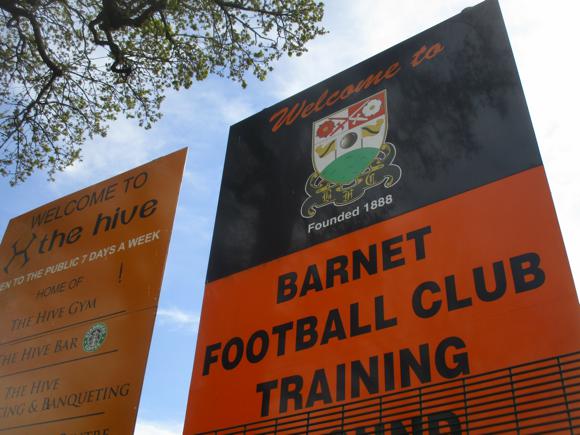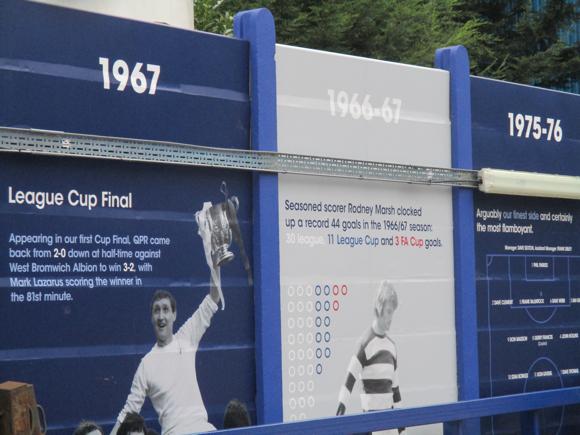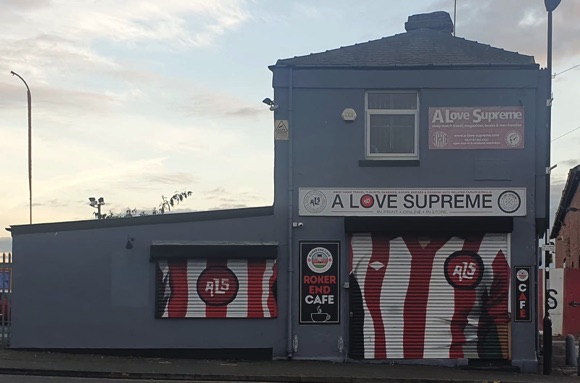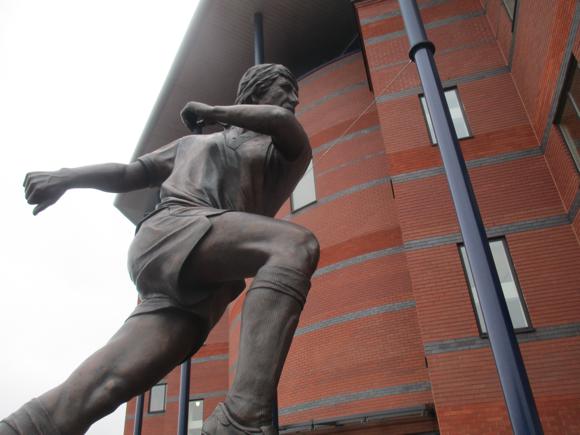A fan’s guide – the club from early doors to today
In the fourth tier for most of this century, Northampton Town have lost the momentum that sparked during a long unbeaten streak in the league from the start of 2016 until mid-September. With a winding-up order from the taxman hanging over their heads and a loan outstanding on a new stand development that had long been unfinished, the Cobblers gained a memorable League Two title with 99 points.
Their peak form continued into the next season, beating West Brom on penalties in the League Cup and landing a plum tie at home to Manchester United. By October though, the jig was up and the club has yo-yo’d between the lowest divisions while the East Stand at the Sixfields Stadium remains unbuilt.
Perhaps worse, trust seems to have broken down between the pioneering supporters’ trust whose valiant work saved Northampton Town pre-Sixfields, and the current ownership.

With the bizarre exception of the early 1960s, and the club’s zoom up the league ladder under Dave Bowen to spend a single season with England’s elite, Town seem more at home in the lower echelons.
From their formation in 1897, the Cobblers have had to struggle against the dominance of other sports in town – the local rugby club immediately objected to the name ‘Northampton Football Club’, hence ‘Northampton Town’.
Sharing the County Ground with Northamptonshire cricket club, Northampton Town moved from Northants to Midland to Southern Leagues, engaging later legendary title-winning manager Herbert Chapman. After retiring as a player at the County Ground, Chapman began his coaching career there, pushing the Cobblers to the top of the Southern League and taking charge of tactical formations, a rarity at the time. He also hired Walter Tull, one of the first mixed-race players in the English game and later a fallen hero in World War I. A memorial stands at Sixfields to this long-serving Northampton inside-forward.

Chapman had moved on by the time Northampton gained Football League status in 1920, attracting 20,000-plus crowds to the County Ground until 1929, when a fire destroyed three stands of the recently improved ground.
The ground rebuilt, Town maintained Division Three (South) status before and after the war. Teenage wing-half Dave Bowen joined the club in 1947 before going to Arsenal and captaining the high-achieving Welsh side at the 1958 World Cup.
Returning to the County Ground as player-coach in 1959, Bowen took a team of savvy buys from Fourth to First Divisions in five years, achieving rapid success with goals from Cliff Holton, Don Martin and three-time Town player Frank Large. Under Bowen, wing-half Joe Kiernan all but made a very strong Scotland side – but his long absences through injury contributed to Northampton’s even swifter descent, from First to Fourth in four years.
Bowen bowed out in 1967, returning in 1969 but unable to reverse the slide or prevent his side from going down 8-2 to Manchester United in a 1970 cup game, George Best famously getting six on a County Ground quagmire.

Despite stints by later internationals Phil Neal and John Gregory, Town stayed fixed to the fourth flight, with fleeting seasons in the third.
With the County Ground crumbling, debts piling up and the team filled with youth players, fans formed the country’s first supporters’ trust in 1992. Staying above bottom place in the League by a fluke goal at Shrewsbury Town, Northampton hit the very bottom in 1994. Ironically, it was the state of Kidderminster’s stadium that kept the Cobblers up that season, the Harriers prevented from gaining League status.
Across Northampton at Sixfields, Town were building their own stadium. Opened in 1994, the new ground helped spur a modest revival, buoyed by a new-found community spirit among fans.
Northampton gained promotion in 1997, on a stoppage-time free-kick from on-loan John Frain, then again by right in 2000 and 2006.

Chris Wilder, who played one game for Town in his much-travelled playing career, arrived as manager halfway through the potentially disastrous 2013-14 campaign. Keeping the Cobblers just clear of relegation, Wilder steered Northampton back up the table until the record-winning streak of 2015-16.
Leading Town to the League Two title, Wilder left for his boyhood club Sheffield United, Rob Page taking over. With veteran Marc Richards still prolific, Northampton kept pace in League One in 2016-17 but not the following season.
While making the League Two play-offs in the truncated season of 2019-20 was edgy, Town nipping past Port Vale on fractions of a point, and the semi-final win over Cheltenham a tight fightback from a 0-2 home deficit, the final was anything but. The Cobblers overpowered Exeter 4-0 at Wembley, then were forced to jettison victorious manager Keith Curle halfway through the dismal League One campaign.






Ground Guide
The field of dreams – and the stands around it



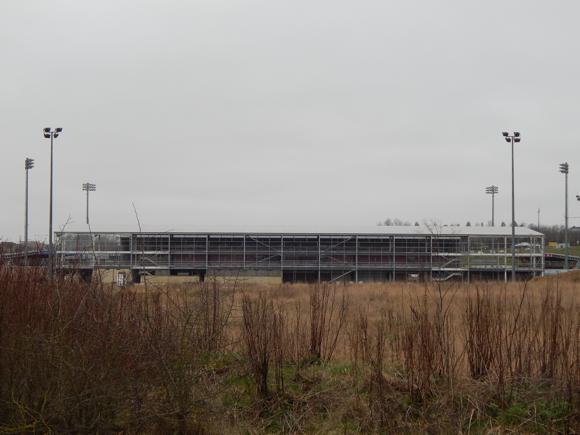

A neat, compact, all-seater 7,700-capacity stadium set in a natural bowl south-west of Northampton, Sixfields was opened in 1994. It represented a major step forward for the club, up until then tied to the County Ground and in dire financial straits until the supporters’ trust stepped in.
Sadly, Sixfields still signals fiscal impropriety, building the new East Stand having been undertaken with a significant loan from the local council and never completed. Today, it’s still a one-tier affair, in stark contrast to the large, twin-tier West Stand opposite. Behind are the club offices, shop and supporters’ bar.
The home end is the North Stand, named after three-time promotion-clinching manager Dave Bowen, backing onto Walter Tull Way. Away fans are allocated the South Stand, accessed through gate 3. Any overflow for popular fixtures is taken care of by extra seats in the East Stand.
getting there
Going to the ground – tips and timings

The stadium is south-west of the city centre, a little too far to walk from the train station. There’s no special match-day transport, only regular buses and taxis.
Stagecoach Northamptonshire buses leave from the Black Lion Hill approach road to the train station, reaching the Sixfields Stadium stop by the Bella Italia restaurant in around 10mins. The main service is the 15/15A (every 30mins daily) until early evening when the otherwise hourly 55 is more frequent, operating until around 9.30pm.
The sat nav code for the Sixfields Stadium is NN5 5QA. Parking at the ground costs £4 on the day, using either the North car park alongside or South one slightly further away. If the rugby team are at home that day, too, demand will rise, so try and arrive earlier. Using the parking spaces around the multiplex cinema or surrounding restaurants may result in your car being towed away.
getting in
Buying tickets – when, where, how and how much


The ticket office (Mon-Fri 10am-5pm, home-match Sat 10am-kick-off & after final whistle, away-match Sat 10am-2pm, Sat otherwise closed) is at the club shop in one corner of the main West Stand. The telephone hotline (01604 683 777) operates the same hours. The club also offers an online service for ticket purchases. For all enquiries, email tickets@ntfc.co.uk.
On the day, you can pay by card at the main ticket office or by cash at the match-day outlets at the front of the stadium – prices are £2 dearer in most age categories.
Advance prices are set at £22, £18 for seniors and under-21s, £10 for under-18s. It’s free admission for under-7s.
what to buy
Shirts, kits, merchandise and gifts

The club shop (Mon-Fri 10am-4.30pm, non-match Sat 9am-1pm, match days 10am-kick-off & after final whistle on match-day Sat) is the corner of the main West and South Stands. First-team shirts are maroon, the change strip black, with no trim colours going on, just the large club badge of fearsome heraldry and the sponsor’s name.
There’s not much by way of badges, the classic affordable, portable souvenir, although younger visitors will be kept occupied for a while with the sticker set.
Where to Drink
Pre-match beers for fans and casual visitors


The Thomas À Becket is a good choice, albeit one a fair stroll from the ground: one bus stop from the train station, just before the rugby ground, 6-7 bus stops/20min walk from Sixfields. Big-screen sport, cask ales and a snooker table, plus home-cooked food, in a welcoming atmosphere, should make it worth you allowing time for a visit.
The other recommended option is much closer to Sixfields, the Walter Tull, on Walter Tull Way, a Flaming Grill restaurant on the town side of the stadium. Venue and location are named after the mixed-race Northampton player and World War I hero. Steaks, burgers and burritos are the order of the day, with a kids’ menu too, but the Walter Tull is also good for a couple of pre-match pints (San Miguel, John Smith’s, Guinness) and a gawp at football on TV.




The adjoining leisure park contains regular family-friendly chain eateries such as Chiquito and Bella Italia.
Right by the stadium, the Sixfields Tavern is a home fans’ stronghold – or was, before it burned down just before an FA Cup game in 2015. Action by quick-thinking staff helped save match-day drinkers from disaster. It’s now reopened in the Hungry Horse pub/restaurant chain, with a set menu and TV sport.
Under the main West Stand is the match-day Carr’s Bar for home fans and, for those on a hospitality package, the 1897 suite.







